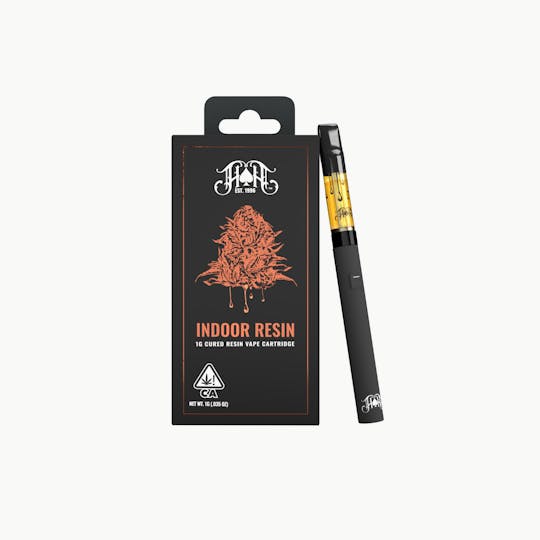
Indoor Resin: Purple Kush - 1g Cartridge
"PURPLE KUSH IS A CLASSIC INDICA KNOWN FOR ITS DEEP, EARTHY FLAVOR WRAPPED IN SWEET GRAPE AND SUBTLE SPICE. THE HIGH IS HEAVY AND SOOTHING — FULL-BODY RELAXATION THAT MELTS AWAY TENSION AND QUIETS THE MIND. IT'S A LIGHTS-OUT STRAIN, BEST SAVED FOR THE END OF THE DAY WHEN YOU’RE READY TO SHUT IT ALL DOWN.
PHENOTYPE: INDICA
LINEAGE: HINDU KUSH X PURPLE AFGHANI
FLAVOR PROFILE: EARTHY GRAPE, HERBAL, SWEET
EFFECT PROFILE: SEDATING, CALMING, DEEPLY RELAXED
THIS STATEMENT HAS NOT BEEN EVALUATED BY THE FOOD AND DRUG ADMINISTRATION. THIS PRODUCT IS NOT INTENDED TO DIAGNOSE, TREAT, CURE, OR PREVENT ANY DISEASE."
- Grape
- Earthy
- Berry
Ultra Pure & Ultra Potent
Family-owned and operated since 1996, Heavy Hitters has been a cornerstone of cannabis culture for nearly three decades. Throughout the years, we've seen trends come and go, but our commitment to innovation and the pursuit of the perfect high has never changed.
With over 10 million units sold, Heavy Hitters has consistently set the industry standard, standing as the leading premium cannabis brand on the market. Our legacy is built on a dedication to master craftsmanship and delivering only the highest quality products.
From oils and edibles to pre-rolls, every product we offer is crafted with top-tier materials and cutting-edge technology, ensuring an unparalleled experience for experienced users.
After 28 years, many have come and gone, but only one brand hits heavy.
There are multiple origin stories about Purple Kush, also called Purple Hindu Kush, and no shortage of products on the market that claim its name.
According to Northern California’s Dark Heart Nursery, the strain originated in the Oaksterdam neighborhood of Oakland, Calif. The breeder and other online sources suggest it’s a cross of a Hindu Kush female pollinated by a Purple Afghani phenotype and a landrace cultivar from Afghanistan.
Afghani strains typically have sedative effects, which could explain why Purple Kush is known for its soothing, sleep-aiding properties. The strain is also named for its vibrant violet color, which is due to acidity levels, its anthocyanin (pigment) content and/or cooler temperatures where the plant is typically raised.



